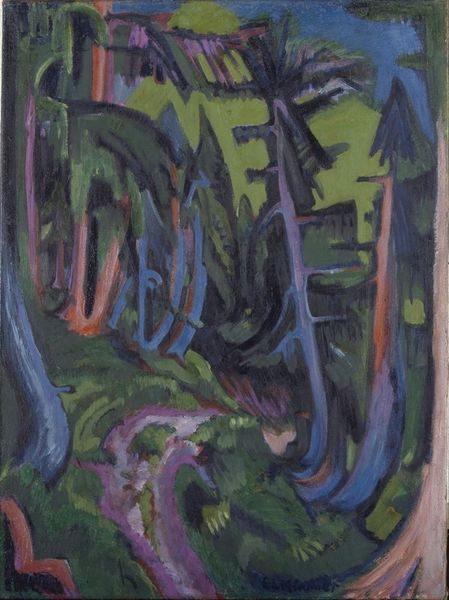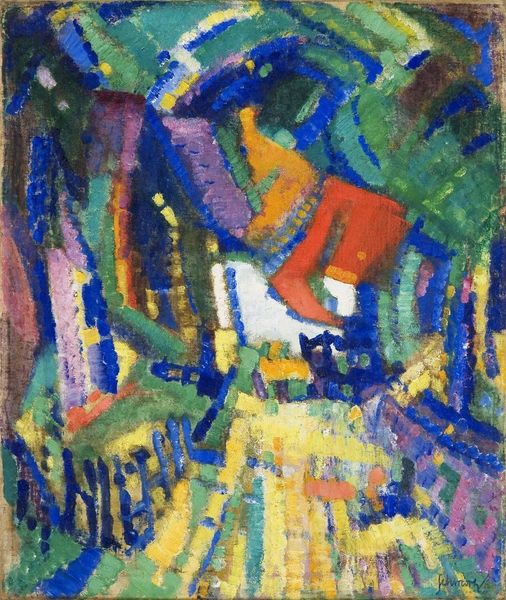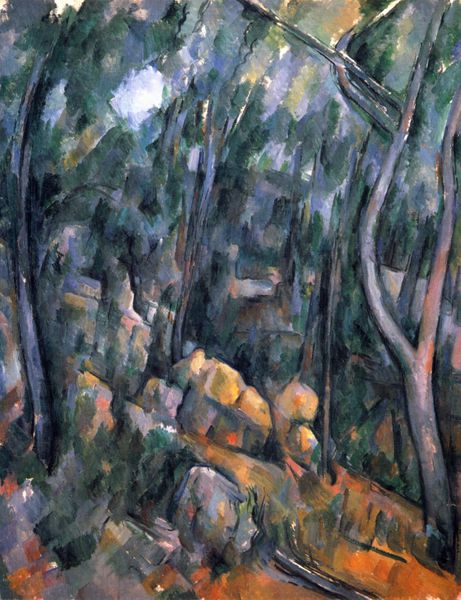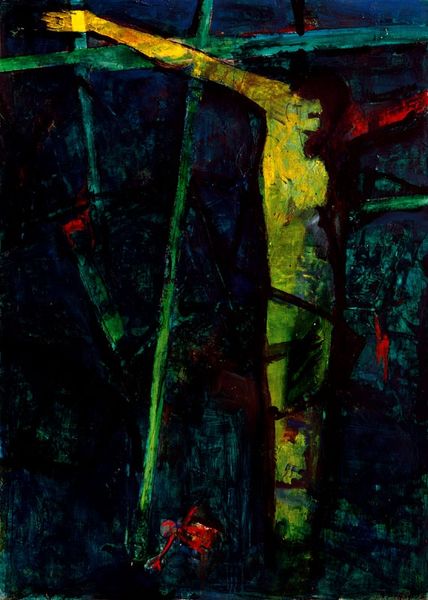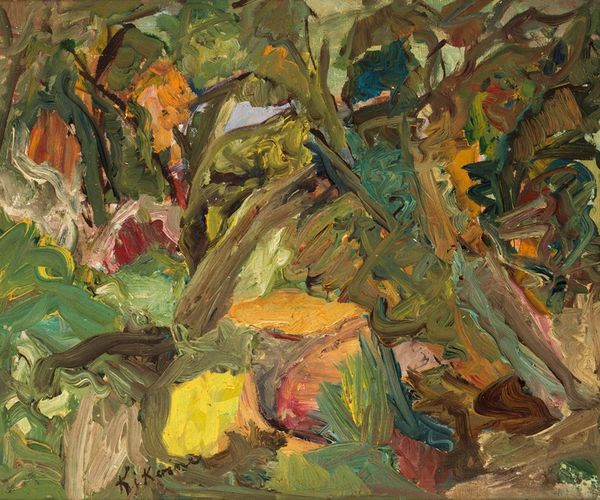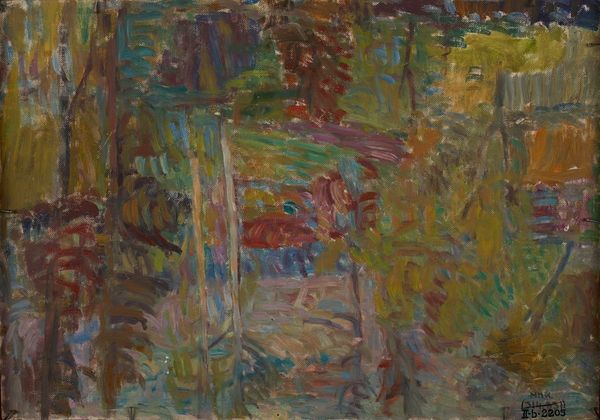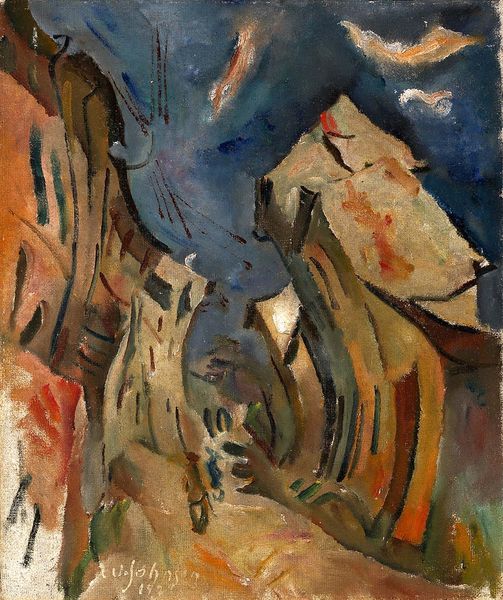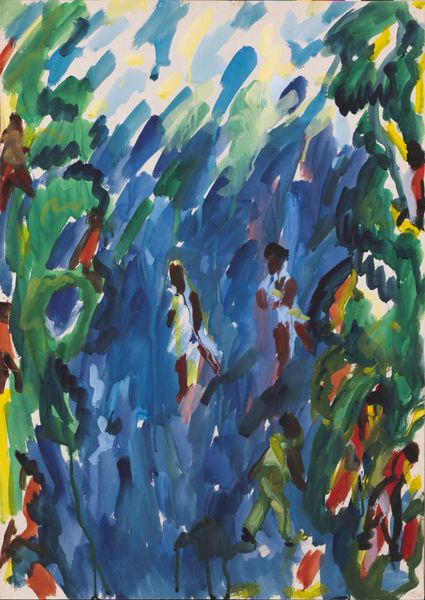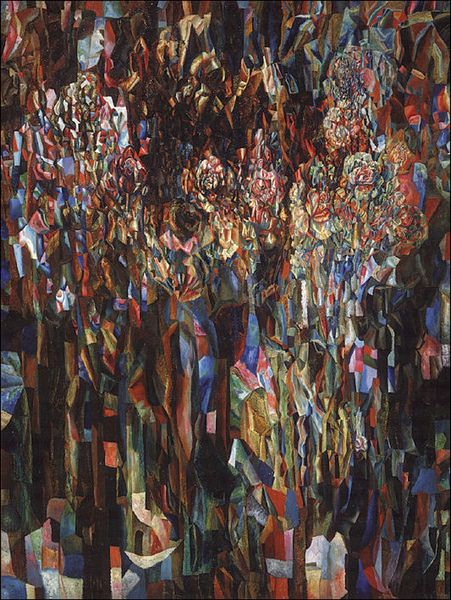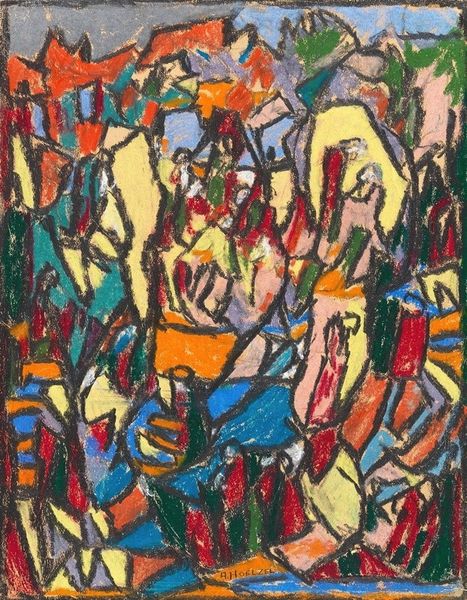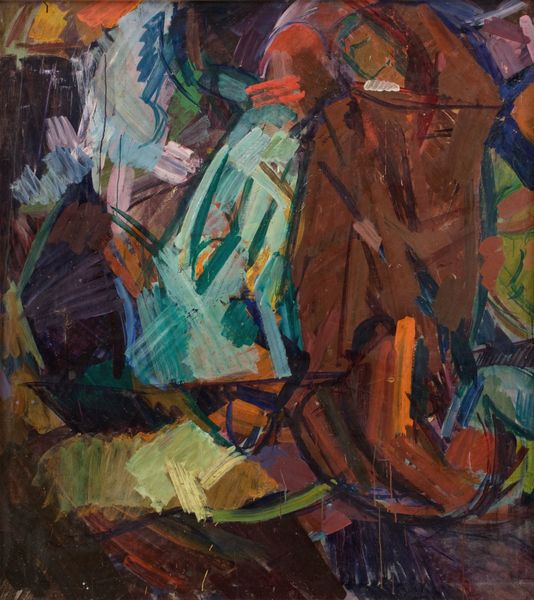
Dimensions: 73 x 60 cm
Copyright: Public domain US
Editor: Here we have Raoul Dufy's "Trees," painted in 1913, using oil. What strikes me most is how he uses these almost brick-like strokes of color to construct the image. What do you see in this piece? Curator: Immediately, I’m drawn to the almost unsettling tension between the Fauvist use of color and the way the forms—particularly those vibrant blue strokes—evoke the mosaic surfaces and psychological weight we see in Byzantine art. It's as if Dufy is tapping into a deeply embedded cultural memory of visual intensity. Do you sense how the trees, normally symbols of tranquility, are rendered here with a certain anxiety? Editor: Yes, actually. It’s not the calm, serene forest scene I’d expect. The colors are so vivid they're almost jarring. It feels... modern, even now. Curator: Precisely. Consider the tree, a symbol so rooted in various mythologies and religions - life, growth, connection between heaven and earth. Yet, Dufy distorts this, hinting at the anxieties of rapid modernization and industrialization present at the time. The colors are heightened, but also strangely… fragmented. They are like shattered stained glass. Editor: So, the trees are not just trees. They’re carrying the weight of societal changes? Curator: Indeed. Art, especially during periods of change, often reflects a culture grappling with its identity. Think about how symbols shift meaning across different eras. The same vibrant blue can evoke spirituality in one context and, here, perhaps a more fractured emotional state. Editor: That’s fascinating. I’ll definitely look at landscapes differently now, not just as pretty scenery, but as carriers of deeper cultural meanings. Curator: And remember, the language of visual symbols is always evolving, reflecting our ever-changing relationship with the world around us. It’s a powerful testament to the enduring ability of images to capture and communicate our shared human experience.
Comments
No comments
Be the first to comment and join the conversation on the ultimate creative platform.
